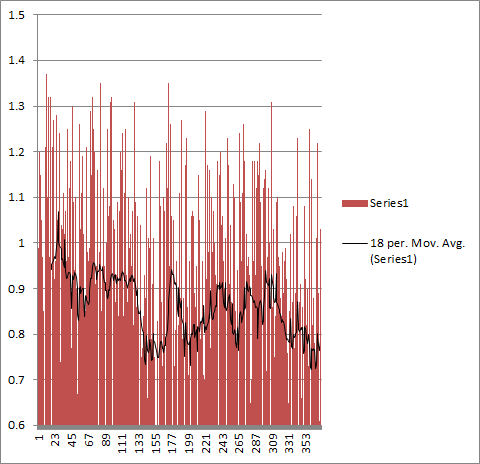Case Studies
Migraine Treatment Success: HRV data over time (Ne.Be)
Kristen Sparrow • September 14, 2016

 This data has been collected since the first treatment. He had severe migraines, 3/week and was in the last year of an extremely high pressure, public project. Insomnia was another issue and it affected the migraines, with poor sleep often triggering a migraine.
This data has been collected since the first treatment. He had severe migraines, 3/week and was in the last year of an extremely high pressure, public project. Insomnia was another issue and it affected the migraines, with poor sleep often triggering a migraine.
Points I want to emphasize for you.
- Patient had clinical results relatively early, as we saw here, with a diminution in number and severity of headaches. He has now gone more than 3 months with no migraine, but this is after 1 1/2 years of acupuncture treatment.
- In spite of positive clinical results, he did not show the decrease in stress after needling over the 20 minutes of treatment. This is often the sign of a clinical responder, which he did not have.
- Over time, I couldn’t perceive any change in his autonomic balance, in spite of excellent clinical results until I took the time to chart his DFAα1, a nonlinear method. This data shows significant change over time.
- Of course, I’m happy with such excellent results and pleased that at least part of my hypothesis holds, that effective treatment can follow a decrease in stress over time. HOWEVER, this also underscores the driving force of this study. Why can’t we get results faster? Should it really take over a year to see a decrease in stress? Can’t we figure out the basic principles better so that we could see this over 3 months? 3 weeks? Perhaps not, perhaps the body just takes time to make such a shift. But still, that is the goal.
 I realize that this is very “noisy” data, but the trend is clear. I will also add a moving average snapshot of all of his data
I realize that this is very “noisy” data, but the trend is clear. I will also add a moving average snapshot of all of his data

